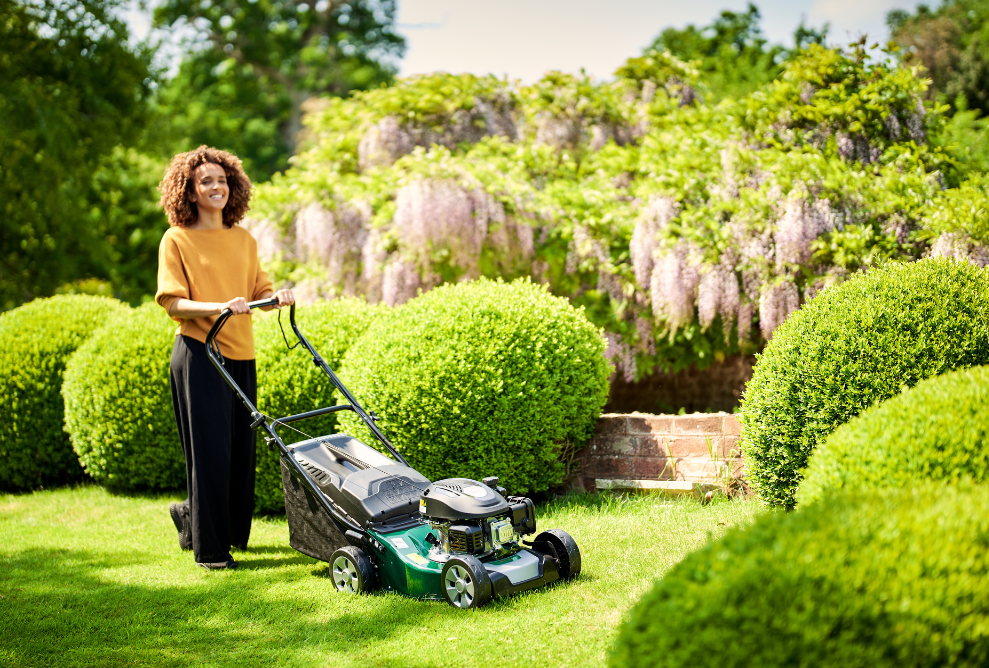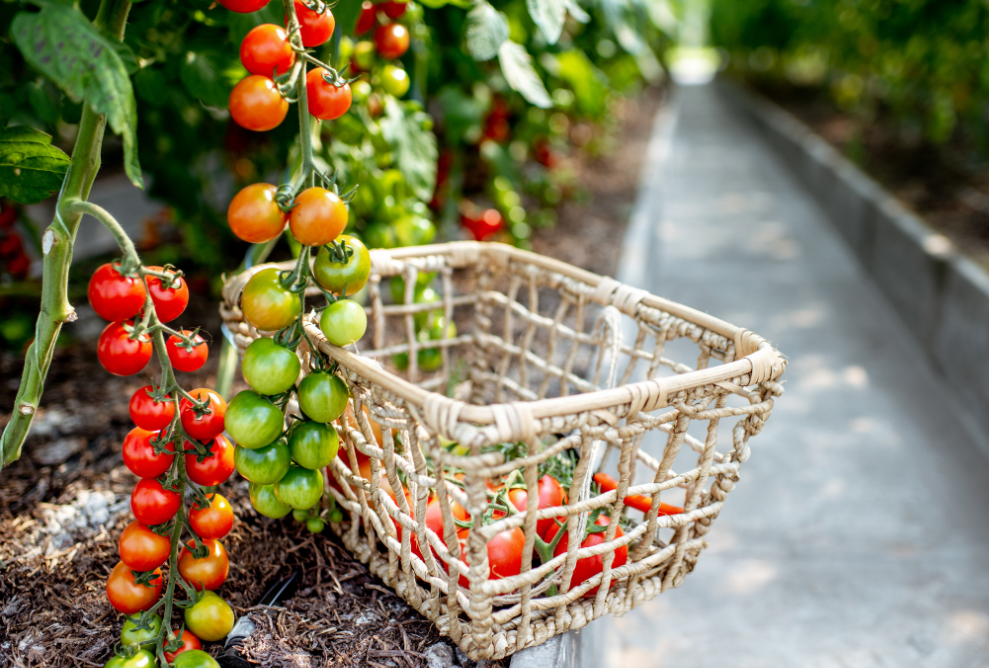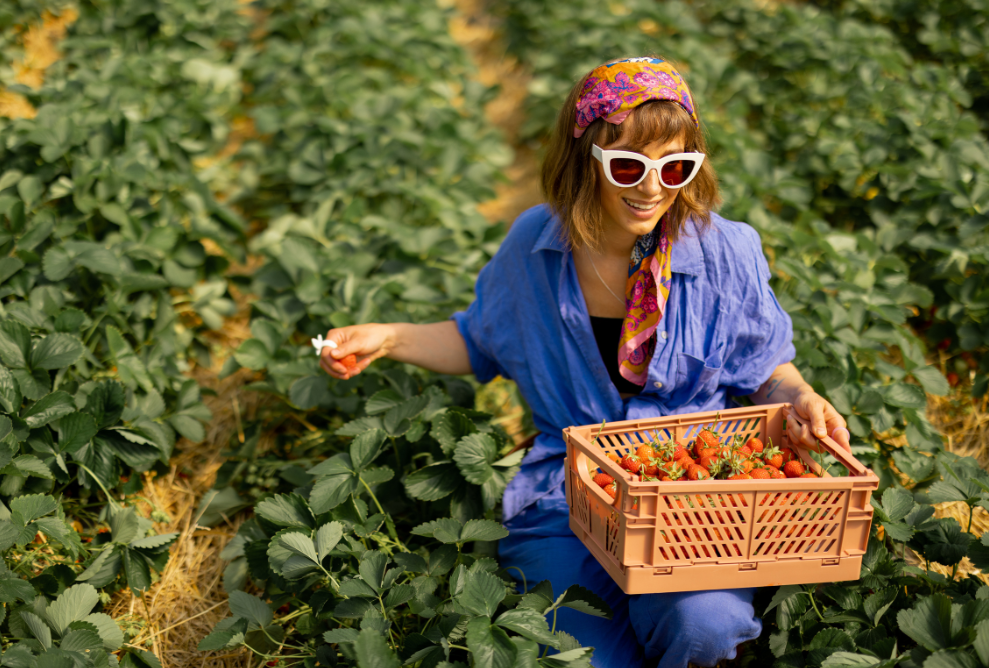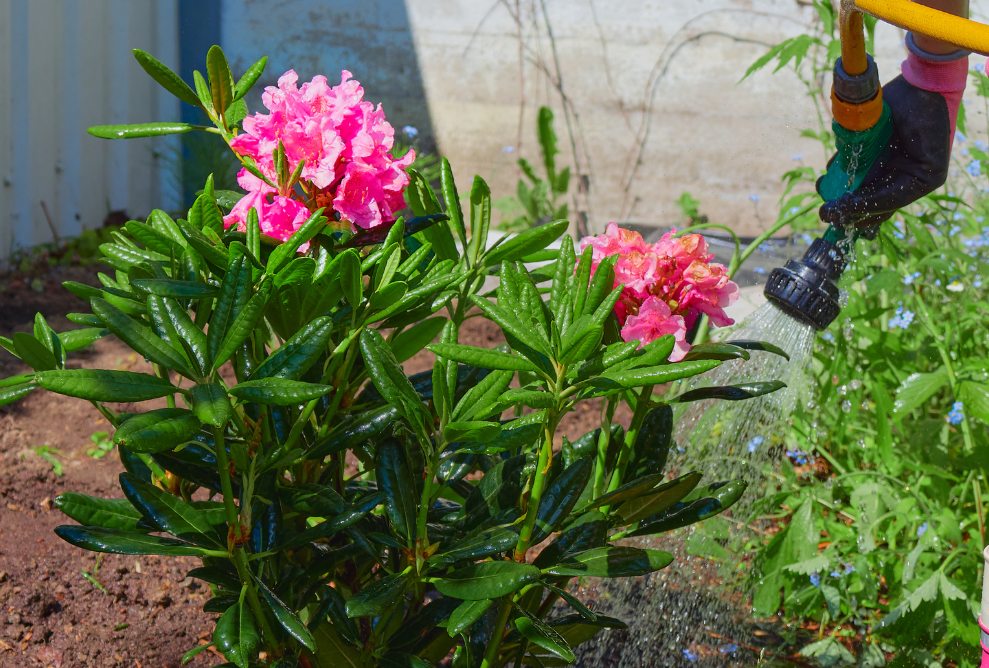
Currently, down in Devon, we have had a hosepipe ban for the last couple of months, though interestingly the ban allows gardeners to use a hosepipe for irrigating food crops. Thank goodness!
Let’s have a look on what we need to do in our garden this August!

Lawns
Most of the country had some heavy showers in July and in places, real downpours. Prior to this our lawns had a distinctive brown appearance, but the emerald green is returning!
So what do we do?
Hopefully you have already raised the blades on the mower but if not, do it before mowing, to avoid stressing the new grass growth if the hot, dry weather returns.
If you have not used a chemical weedkiller in early summer, you can allow the clippings to lie on the lawn to form a mulch should the hot, dry weather return.
Late summer/autumn is the ideal time for ‘over-sowing’ worn areas or indeed, sowing new lawns. Why? Temperatures are a little lower with less competition from weeds and the autumn rain will aid germination.
For new lawns, dig and rake the area, hoeing off any weed seedlings to prepare a clean ‘seed-bed’ prior to sowing.

Flower Borders & Containers
August is a month for maintenance in the flower garden.
It’s important to keep up with the watering and feeding of your pots and hanging baskets.
Remember to ‘dead-head’ fading flowers. This prevents the plants ‘going to seed’ and prolongs flowering.
In the perennial border, cut back shoots that have finished flowering to encourage new growth and possibly more flowers.
Continue to cut sweet peas and dahlias for the house to prolong flowering into the autumn.
Don’t forget that you can sow seed of ‘hardy annuals’ such as Californian poppies and cornflowers this month to overwinter and produce their lovely flowers early next summer.

The Vegetable Patch
The coming of August heralds the peak time for harvesting in our summer garden, so let’s get to it!
Firstly, the greenhouse:
Tomatoes – if not already done, remove the growing tips when 5/6 trusses of fruit have formed to encourage ripening before the end of the year. (4-5 trusses for outdoor plants)
Gradually remove some of the basal leaves to improve air circulation and deter fungal disease.
Cucumbers – cut fruit regularly and like tomatoes remove some of the fading basal leaves to keep the air moving. Remove growing tips and trim side shoots after fruits form.
Peppers do not need lots of input, but thin excessive small fruit to ensure good quality peppers.
For aubergines, limit the plants to 5-6 fruit to ensure ripening.
Remember to keep up with the high Potash liquid feeding if plant foliage begins to pale.
By the end of August, you should have lifted your second early potatoes and begun on your maincrop varieties. Remember though that you can plant late-season varieties in containers for new potatoes at Christmas!
Finally, there is still time to sow fast-growing vegetables in the garden for cropping before winter is upon us. Salad leaves, rocket, spinach, radish and baby turnips are ideal.

Fruit
Cherries, plums, peaches and nectarines will be cropping well, especially with the good weather. Early apple varieties will also need picking.
Strawberries will be producing runners in profusion, so if you need some new plants then peg down some of these runners to root.
Note: if your plants are elderly, I wouldn’t advise this as they may be infected with viral diseases – better to buy new plants, but choose a new planting patch too!
Feed your soft fruit bushes with a liquid fertilizer to give them a potash boost.
Finally, cut down your summer fruiting raspberries to nine inches above the soil when cropping is finished.

Shrubs & Trees
Continually ‘dead-head’ roses to promote further flowering.
Prune summer flowering shrubs after flowering to encourage the production of new shoots.
It’s important to make sure you keep rhododendrons and camellia well-watered at this time as they are forming their flower buds for flowering next year.

